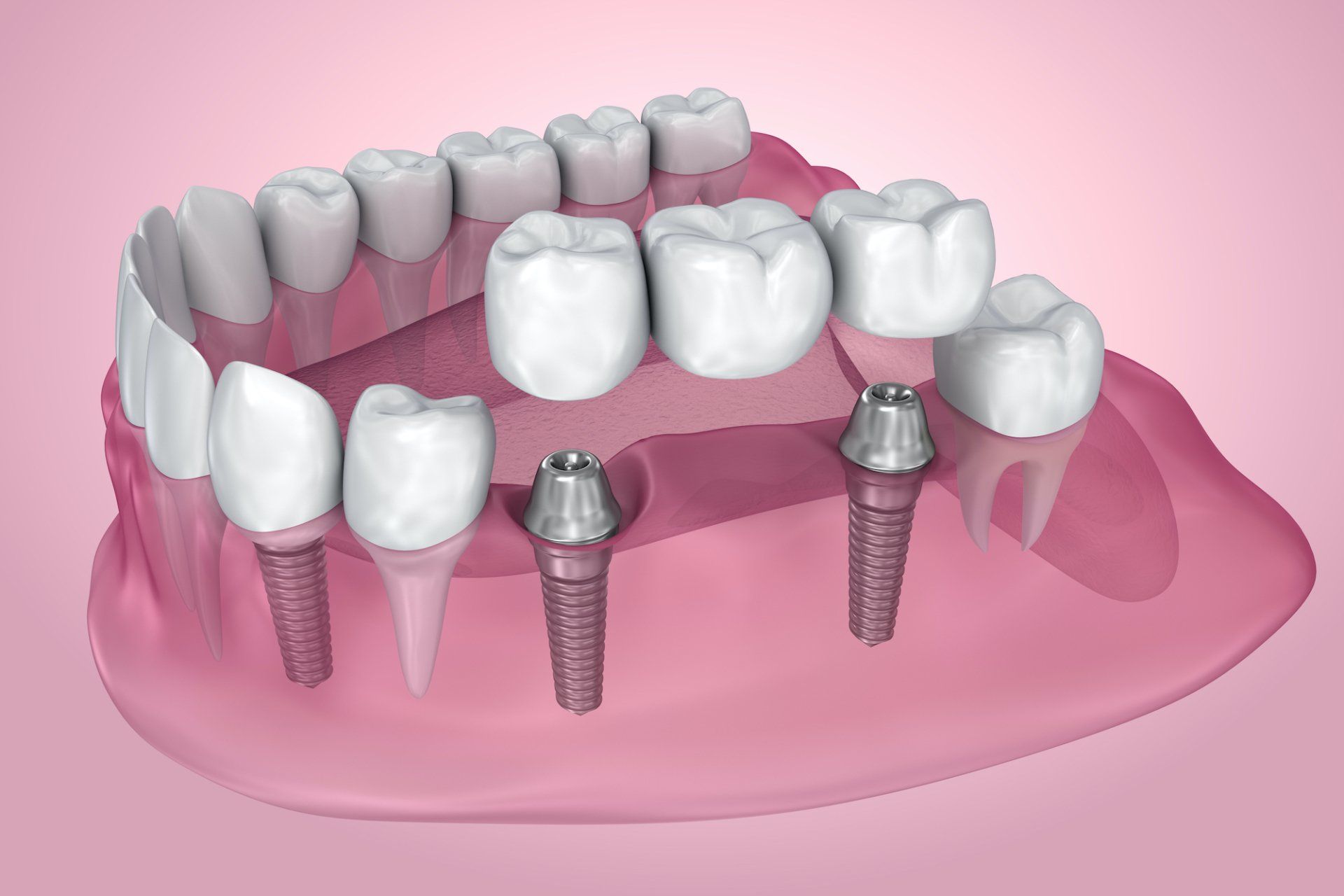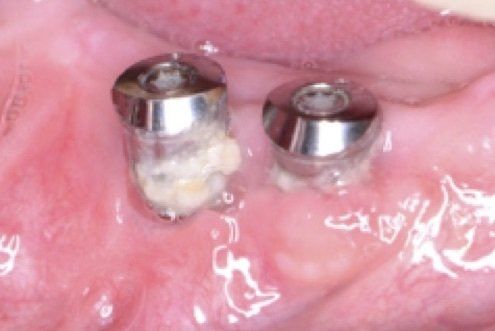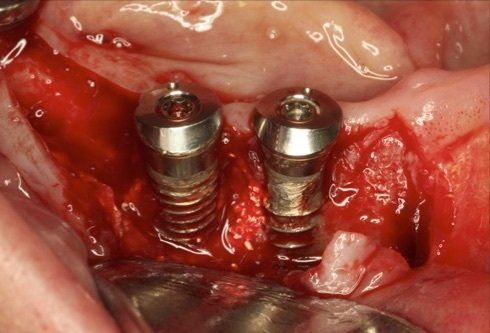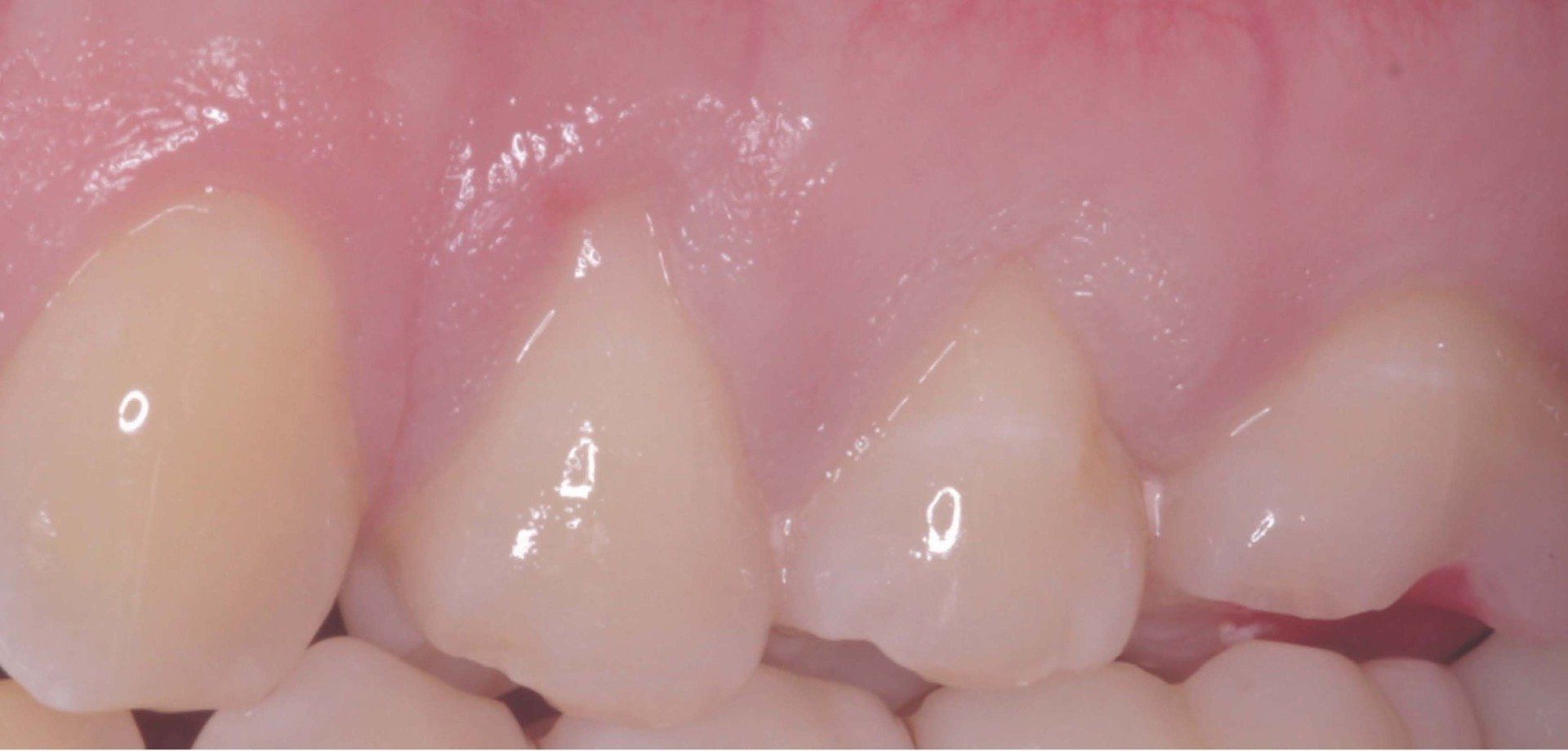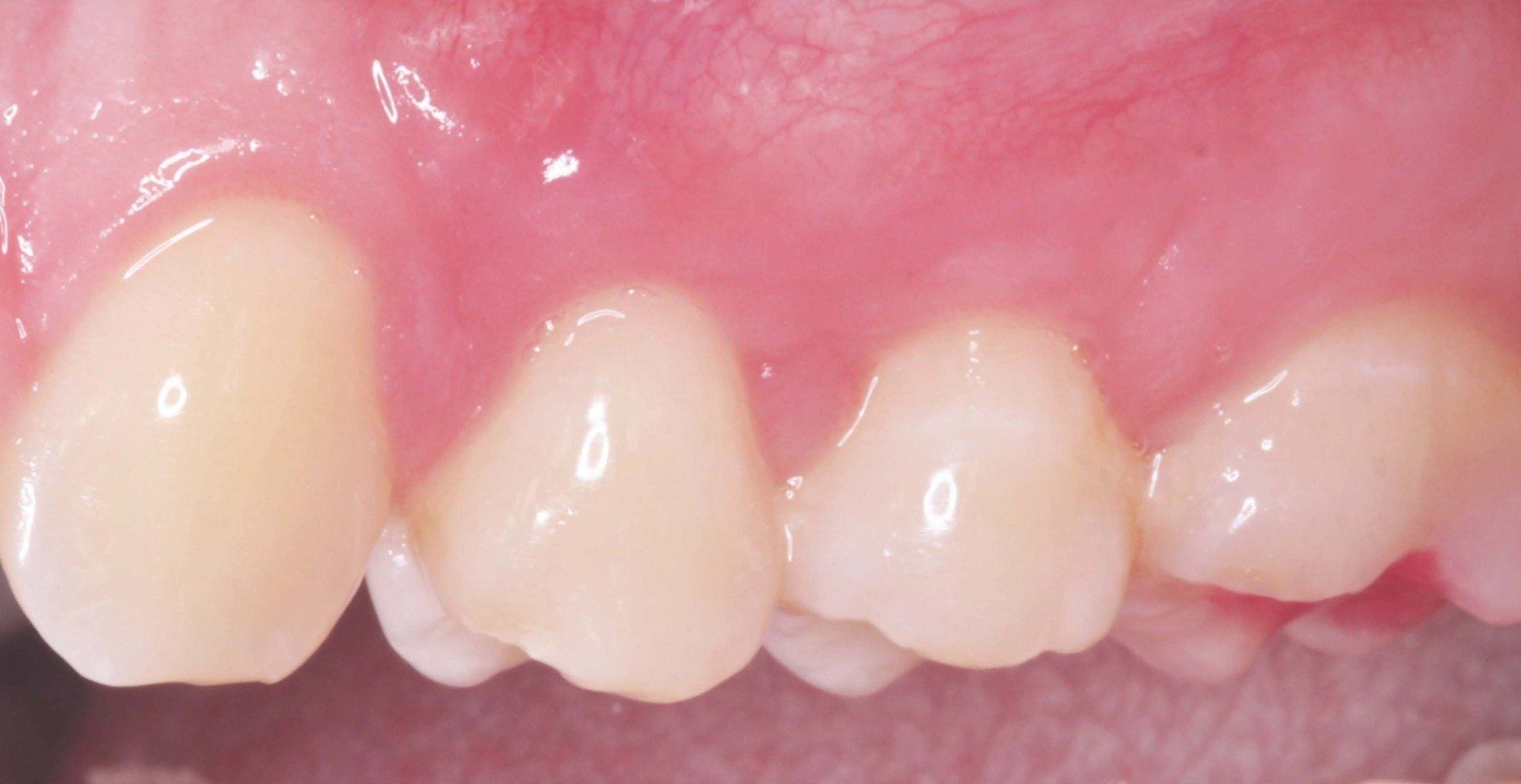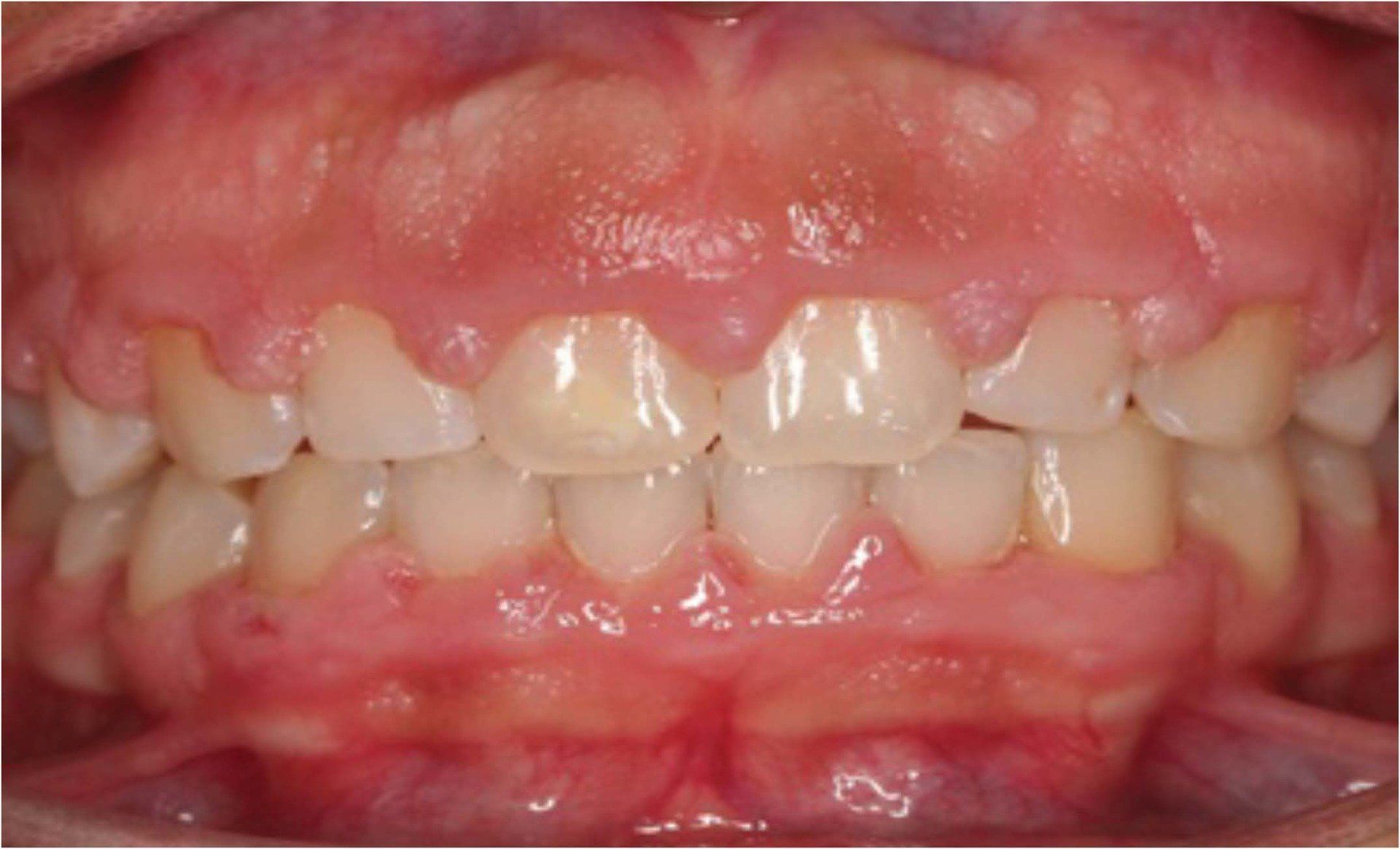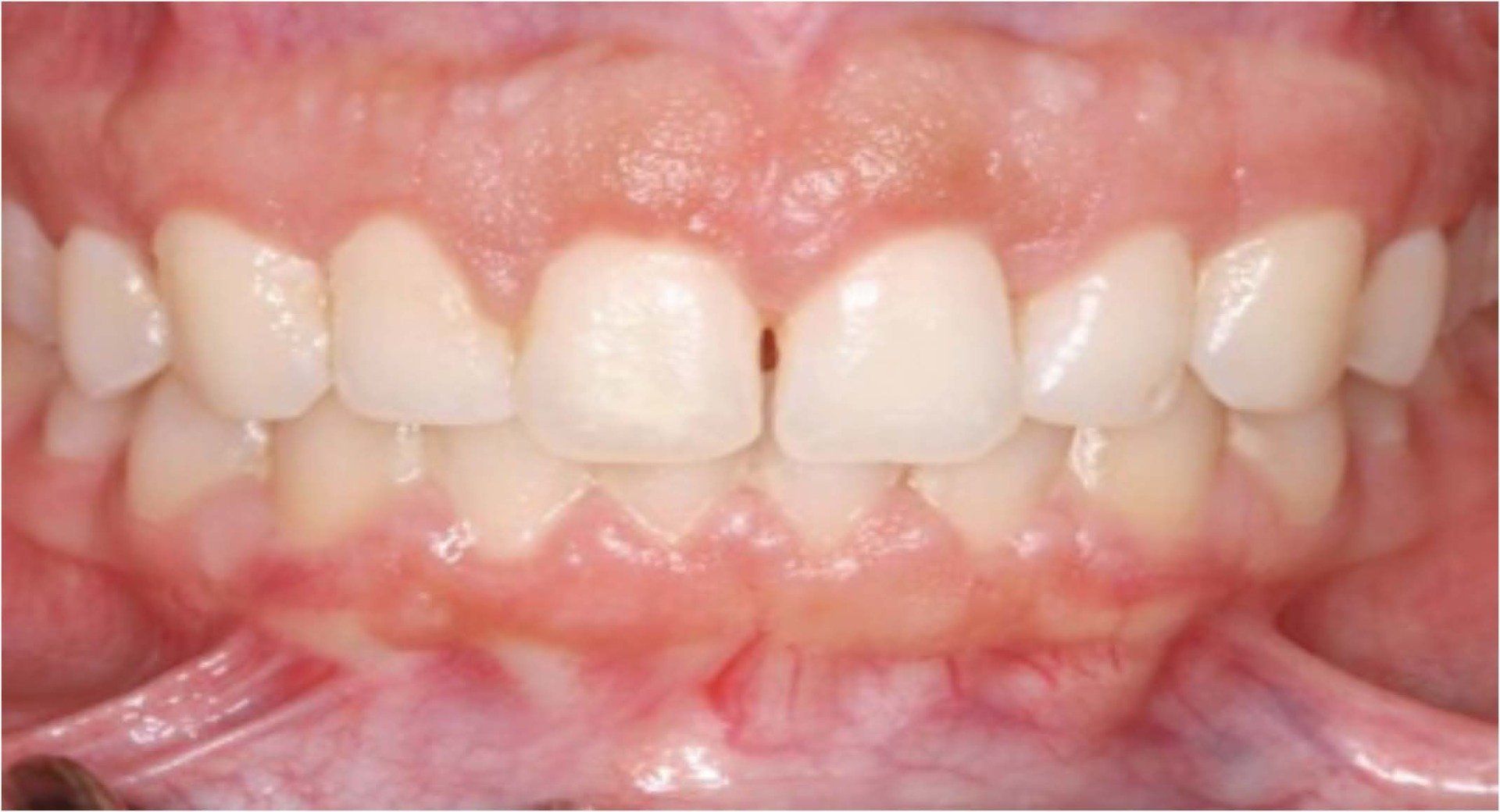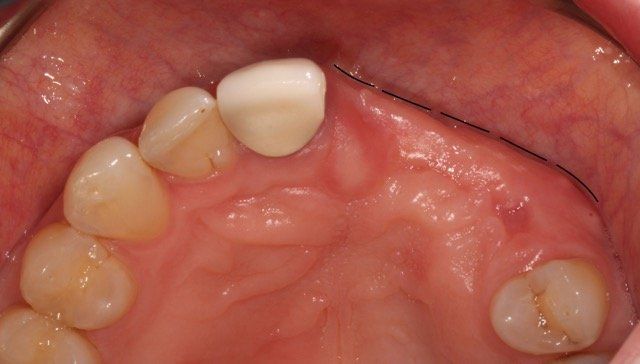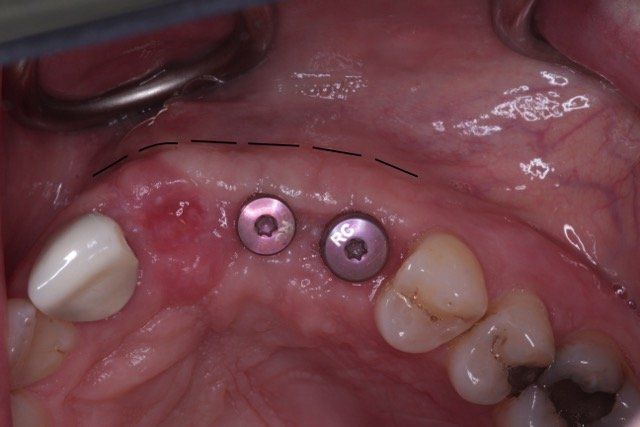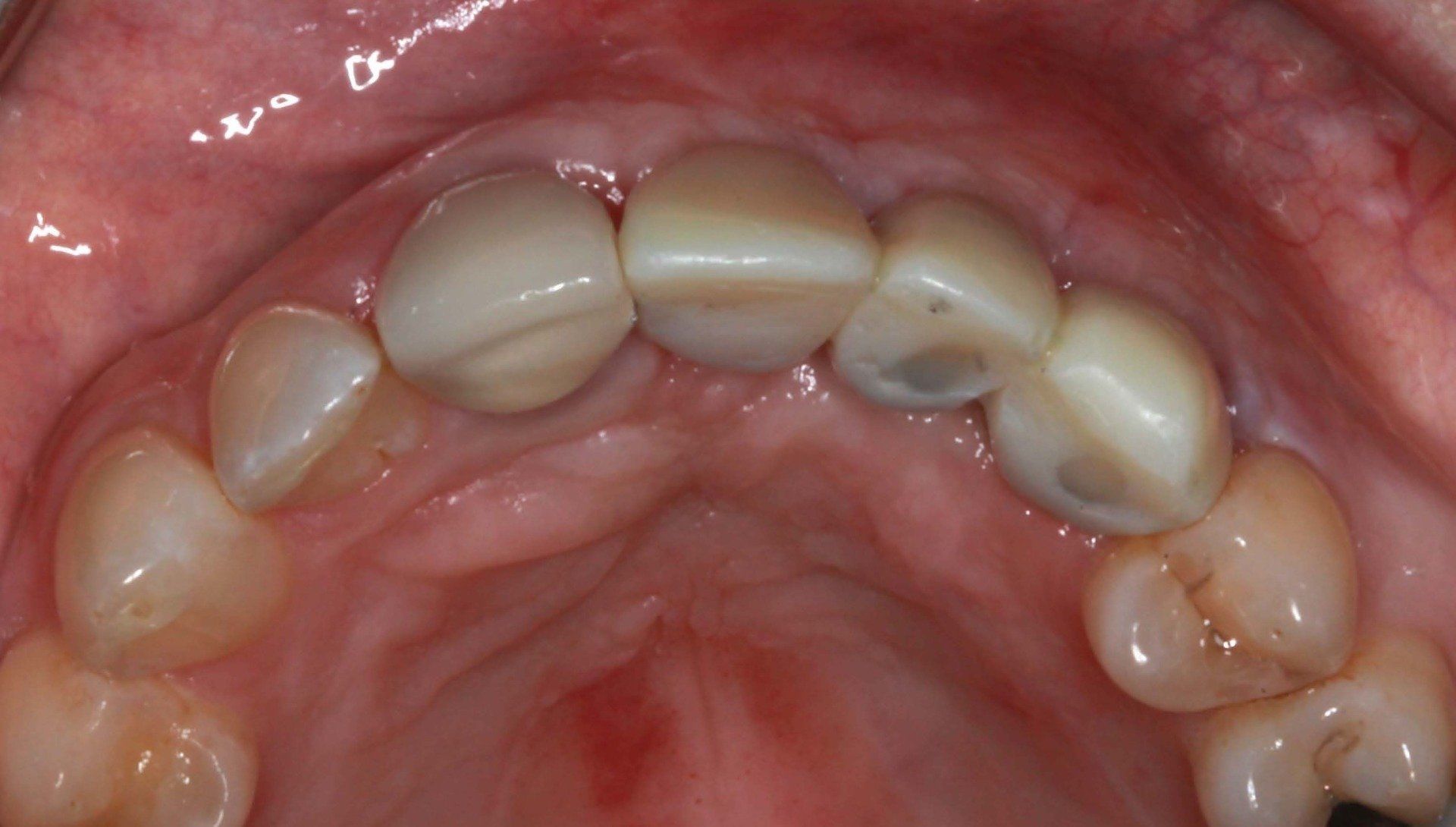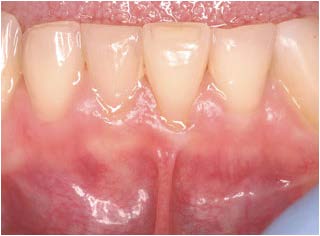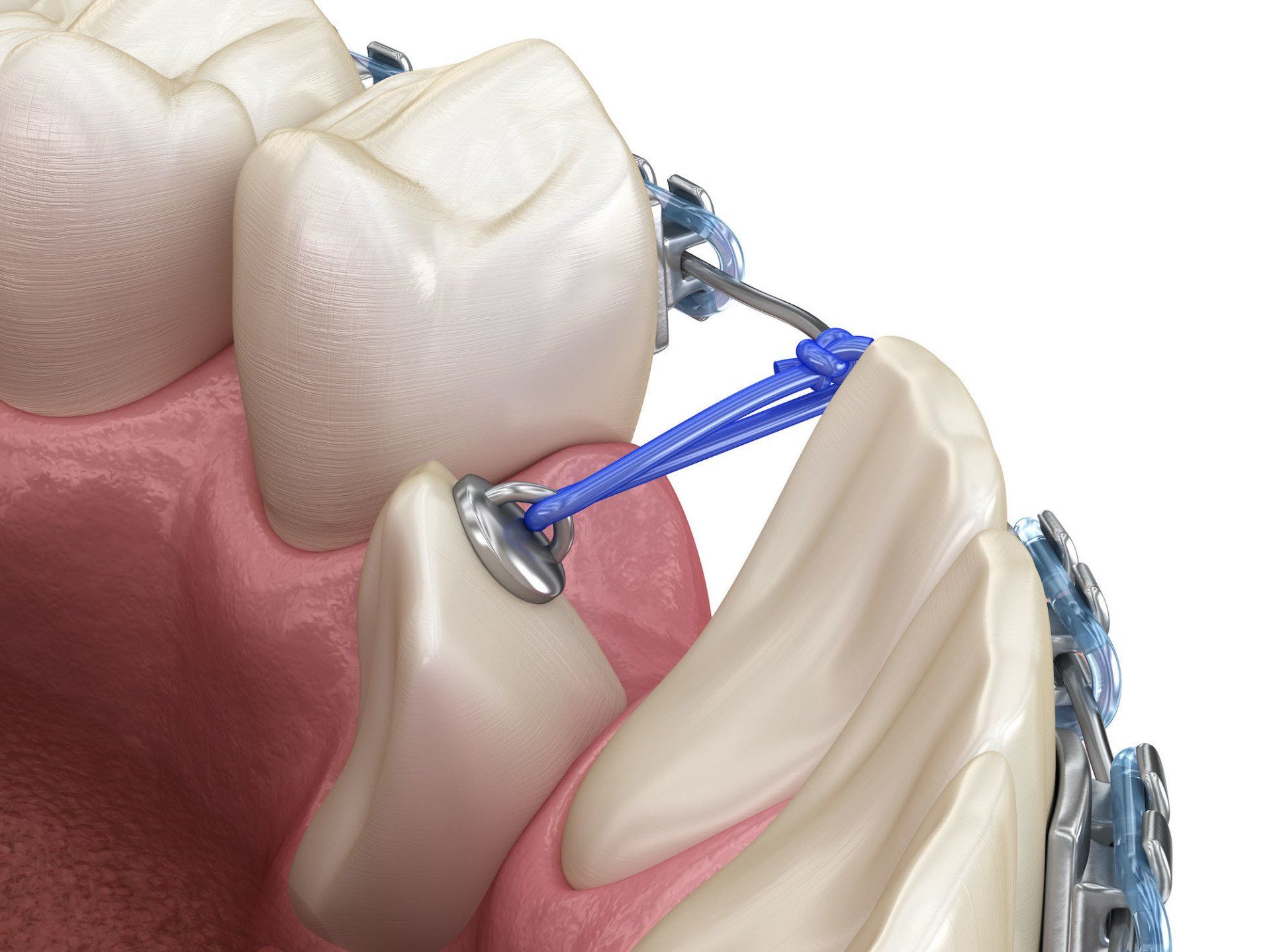SERVICES
Raising the bar in periodontal care
Your dentist and periodontist work together as a team to provide you with the best possible care.
Implants
Dental implants are small screw-shaped cylinders that are inserted into the jaw bone to replace the roots of missing teeth. They constitute anchor points on which crowns or multiple prostheses (bridges or dentures) can be attached. Dental implants are made out of titanium, a metal that is very well accepted by human bone (biocompatible), and has the particular property of fusing with bone.
An evaluation of your case is mandatory to assess if you are a candidate for a dental implant. A 3-D Xray, or CBCT, may be required in order to see the exact position of the anatomical structures and bony walls.
We only use the highest quality implants from the most reputable implant companies that will be around long-term.
Peri-implantitis Treatment
Implants can get gum disease too. Sometimes the disease can result in the loss of the implant or the implant needing treatment to try and save it. This is devastating and very costly. Most of these problems can be avoided with proper diagnosis and planning from the start, along with proper maintenance and monitoring.
If you do develop problems around your implants, periodontists are the ones who are properly educated in techniques to recognize and treat problems around both natural teeth and implants.
Protect your investment! Let us help you maintain good periodontal and peri-implant health.
Gum Recession Treatment
When the gum around the tooth recedes, it leads to the exposure of the root. This condition can be completely asymptomatic, but can still compromise the stability of the tissues (bone, gum, ligament) around the tooth. A variety of factors can cause gum recession, including gum disease, poor dental hygiene, improper toothbrush technique, hormonal changes, genetics, bite misalignment, and more.
In some cases, gum recession can lead to sensitivity to cold, heat or brushing. For some people, it can be unesthetic. A gum graft may be indicated to repair the gum defect, to prevent further exposure of the tooth, prevent bone loss, and partially or completely cover the exposed root.
Gum graft (Autogenous tissue)
Autogenous tissue grafting involves removing a small piece of tissue from the patient's palate (either from the surface layer or the underlying one) and transposing it to the site of the recession.
Gum graft (Allogenic or xenogenic tissue)
Gum grafting with allogeneic tissue uses the same principles as autogenous tissue grafting. Instead of removing tissue from the patient's palate, tissue from a human or animal donor can be used. This is useful when a lot of tissue is needed for a larger area. However, using your own tissue remains the gold standard.
Patient prior to gum recession treatment
Patient after gum recession treatment
Crown Lengthening, Esthetic Gum Contouring
Teeth may be fractured or decayed close to the gum line, rendering them too short for a crown to hold on to. Crowns need enough tooth structure so that they are retentive and long lasting. Otherwise, your crown may keep falling off. A crown lengthening procedure involves moving the gum and bone around the tooth to expose a healthy portion of it. Now that this area is visible and easily accessible, your dentist is able to restore the tooth.
If you have a “gummy” smile, crown lengthening can help to create a different appearance by changing the shape, thickness and contour of the gum tissue. We also use new techniques to alter lip movement and enhance smile design.
Biopsy
Some oral lesions may require a biopsy. A sample of the lesion is taken by your periodontist and sent to a histopathology lab. After microscopic analysis of the sample, we can now establish a proper diagnosis. Your periodontist will meet with you after receiving the results in order to discuss the appropriate treatment and follow up.
Extractions
Sometimes a tooth cannot be saved and will need to be removed. Periodontists are trained to remove teeth very carefully, so as to preserve as much of your bone as possible and limit trauma to the surrounding tissues. Even with an atraumatic extraction, removing a tooth leads to a collapse of the bone during natural healing.
If this tooth is to be replaced, it is essential to maintain adequate bone volume. Your periodontist will assess if you are a good candidate for bone grafting at the time of the extraction. This technique consists of filling the extraction socket with a bone substitute material (that looks like sand) to aid in bone growth. This will help the area maintain sufficient bone volume for either a future implant or under a bridge.
The bone graft typically comes from a cadaver. A membrane that looks like a piece of paper is often draped over it to hold in the bone and keep the unwanted cells out. Membranes usually come from a pig, cow, or synthetic material.
We only use materials (bone, membranes, biologics) that come from the most reputable bone and tissue banks. These banks have strict control over all stages of the process, including rigorous testing and tracking to keep you safe.
Bone Augmentation Procedure
When a tooth or teeth are extracted and no bone grafting is performed, natural bone remodeling occurs. We often observe up to 50% of bone loss, or an average of 4mm (which is the size of an implant) in the first 3 months following that extraction. This bone remodeling continues slowly over the years. In some patients, the bone volume becomes so deficient that replacing the tooth with a dental implant becomes impossible. In most cases, your periodontist can regenerate the lost volume of bone.
This technique is sometimes done prior to implant placement and other times, simultaneously with the implant insertion. Depending on the technique and amount of bone growth needed, this process can take from 3-9 months to heal.
Frenectomy
A muscle attachment, called a "frenum," can create problems around your teeth if they are in an unfavorable position. These frenuli (the plural of frenum) can pull on the gum tissue, creating recession or receding gums, can prevent good oral hygiene, or can create spaces between the teeth. Your periodontist or orthodontist may recommend the repositioning your frenum to correct or prevent a problem.
Periodontal Assessment Prior to Orthodontics
If you decide to straighten your teeth with braces, your dentist or orthodontist may request a consultation with a periodontist before starting your treatment. The purpose of this consultation is to assess whether the foundation of your teeth (i.e. bone and gum tissue) is healthy and strong enough to support the forces that will move your teeth. After a complete examination, your periodontist will give you her recommendations to keep your periodontal condition stable throughout the orthodontic treatment.
Exposure of an Impacted Tooth
When the teeth erupt, some of them may remain hidden or impacted under the gum tissue. In some cases, your dentist or orthodontist may ask you to consult a periodontist to expose this impacted tooth. This procedure will uncover the tooth and adhere a chain to the tooth, allowing your orthodontist to gently pull it to the correct position.
Sinus Lifts
A sinus lift is performed when there is not enough bone in the upper jaw to allow room for dental implants. This happens when the maxillary sinus, which naturally grows larger with age, is too close to the upper jaw for implants to be used.
As a result of bone loss, the sinuses can expand to occupy the empty space where the bone used to be. With insufficient bone to securely place a dental implant, a sinus lift is necessary to move the sinus away from the roots of the teeth or to create additional bone in the area.


